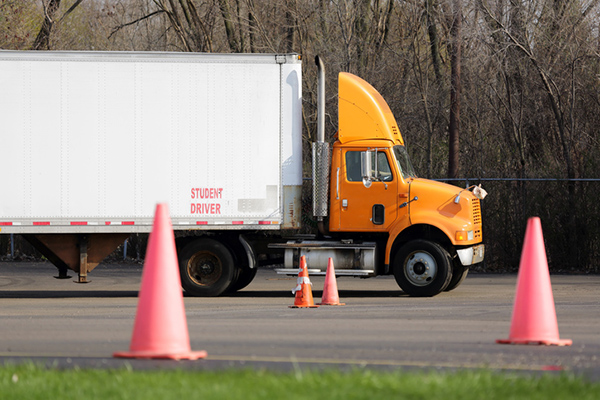Editor’s Note: The SCM thesis Fuel Efficiency and Safety in Coca-Cola FEMSA Last-Mile Logistics was authored by Arturo Torres and Fernando González and supervised by Dr. Maria Jesús Sáenz ([email protected]). For more information on the research, please contact the thesis supervisor.
No one driving a truck in a last-mile logistics operation would start off their day with the aim of driving in an unsafe or inefficient way. Nevertheless, at the end of the day, the difference between the most efficient and the least efficient drivers, in terms of miles per gallon, can be as high as 35%.
With such a marked difference in performance, it is important for companies to question which driving behaviors and styles are optimal for safety and fuel efficiency, identify the trade-offs between them, and find ways to promote the best driving styles.
Big data, machine learning, and 3,000 trucks.
Decades ago, such an approach would have seemed impossible, but with the advent of big data and machine learning, it is now possible to undertake such detailed analysis. Trucks from small, medium, and large companies now carry hundreds of sensors of that compile data from events, locations, temperatures, safety scores, and much more. Some of these events can be highly relevant to understanding safety. We worked with data from vehicle telematics that continuously record events such as braking while turning, hard braking events, and over-acceleration events. All these data points are recorded every minute or even second by second and sent to the cloud for storage.
Over the past year, we worked with Coca-Cola FEMSA to identify which of these events and data points make up different driving styles and what their impact is on fuel efficiency and safety. All this was done with state-of-the-art machine-learning algorithms to predict, classify, and cluster these hundreds of parameters into relatable and understandable driving-style personas.
Speedy Sebastian, Average Arthur, and Overachiever Ophelia: Our optimal driving styles
We identified five distinct driving styles that have different impacts on fuel efficiency and safety. Each driving style is characterized by specific combinations of driving behaviors. We then used the driving behaviors and their impact on fuel efficiency and safety score to come up with names that personify each cluster, creating the driving-style personas. The five driving styles that we found and named were Speedy Sebastian, Inefficient Isobel, Overachiever Ophelia, Hazardous Harry, and Average Arthur. For example, Speedy Sebastian is a cluster characterized by the highest average speed, which can lead to higher fuel efficiency but does not translate to the highest safety scores.
We found three driving styles that would present clear trade-offs between the different metrics, but there were also two driving styles that, if adopted by drivers, would result in a win-win situation. For example, if a company could move its Inefficient Isobel cluster to Average Arthur, it would improve both its fuel efficiency and safety scores by 33% and 1%, respectively. This finding suggests an improvement opportunity that would not require sacrificing fuel efficiency or safety.
Nudging people to change their behavior
Changing the driving behavior of someone who has been in the industry for decades is a challenge. This is why we proposed a driving behavior learning framework that uses intrinsic and extrinsic nudges for daily, weekly, and monthly reminders on how and why drivers could improve their driving styles. We also suggest a training and behavior transfer practice based on knowledge sharing and recognition from the best-performing drivers.
Finally, as next steps, we suggest continuing this research by standardizing the available telematics data and including the factors from our models in a modified vehicle routing problem (VRP), as well as changing the objective function to minimize total fuel consumption and maximize safety, rather than narrowing the objective function to cost minimization.
Pressure is increasing from all sides for companies to become more sustainable and cost-efficient, and to provide a safe working environment. Our research showed how changing driving styles in last-mile logistics trucking provides an excellent starting point for companies looking for actionable and concrete steps to improve their sustainability and safety.
Every year, approximately 80 students in the MIT Center for Transportation & Logistics’s (MIT CTL) Master of Supply Chain Management (SCM) program complete approximately 45 one-year research projects.
These students are early-career business professionals from multiple countries, with two to 10 years of experience in the industry. Most of the research projects are chosen, sponsored by, and carried out in collaboration with multinational corporations. Joint teams that include MIT SCM students and MIT CTL faculty work on real-world problems. In this series, they summarize a selection of the latest SCM research.
SC
MR


Latest Supply Chain News
- Israel, Ukraine aid package to increase pressure on aerospace and defense supply chains
- How CPG brands can deliver on supplier diversity promises
- How S&OP provides the answer to in-demand products
- AI, virtual reality is bringing experiential learning into the modern age
- Humanoid robots’ place in an intralogistics smart robot strategy
- More News
Latest Podcast

 Explore
Explore
Topics
Business Management News
- How CPG brands can deliver on supplier diversity promises
- How S&OP provides the answer to in-demand products
- AI, virtual reality is bringing experiential learning into the modern age
- Tips for CIOs to overcome technology talent acquisition troubles
- There is still work to do to achieve supply chain stability
- Blooming success: The vital role of S&OE in nurturing global supply chains
- More Business Management
Latest Business Management Resources

Subscribe

Supply Chain Management Review delivers the best industry content.

Editors’ Picks





